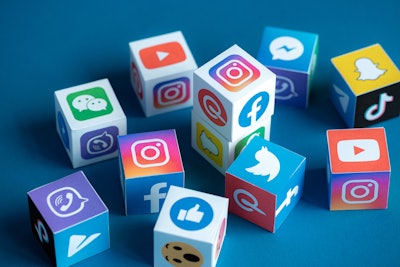
In my 18 years of experience as a communications and marketing professional, I have learned that when the economy takes a hit, one of the first things manufacturers and distributors invariably do is cut their marketing budgets. For many, doing so appears to be simply good common sense. If no one is buying, why advertise?
It may seem like common sense, but is it the right thing to do?
Let's take a look at the following two marketing scenarios, both of which are studied in colleges and universities around the country.
Toyota
Today, we all think of Toyota as a Japanese powerhouse. Year after year, the company sells more cars than its Japanese competitors and outsells most brands made in Germany and the United States. However, that was not always the case.
In 1973, during the oil crisis, Toyota was struggling to make headway in the U.S. marketplace, as were Honda and Nissan. These cars were all very fuel-efficient in their day, surpassing most cars manufactured in the U.S. However, Japanese automakers were grappling with negative "quality control" publicity, which was hampering sales.
Once the oil crisis took hold, the United States and many parts of the world went into a 17-month recession. Honda and Nissan decided to pull back on their advertising during the recession. They believed this would help improve their cash flow. Once the economy started picking up, they would increase marketing, with an emphasis not only on fuel economy but also on quality.

But they resisted. Company executives adhered to their quietly held, long-term strategy not to cut marketing in a downturn. Not only did they continue their marketing efforts, but they increased it in specific markets.
By 1976, when the recession was officially over, sales of Toyotas far surpassed Honda and Nissan, and neither of these automakers has ever caught up. Plus, Toyota topped Volkswagen, then the best-selling import in the United States.
Pizza Hut
Today, everyone has heard of Pizza Hut. But just like Toyota, the pizza chain was not a household name among consumers 30 years ago. At the time, McDonald's was by far the most significant player in the fast-food industry.
Once again, change was coming. When the Gulf War began in 1990, it quickly resulted in a recession that gripped the United States for more than a year. McDonald's, confident this recession would have little impact, dropped its advertising and promotional budget entirely. Pizza Hut, on the other hand, increased its budget significantly.
Once the country was out of recession, marketers looked back to see what impact — if any — these different marketing strategies made on sales. What they found was that during the recession, McDonald's sales declined by 28 percent. Pizza Hut sales increased by 61 percent.
And that’s not all. The fast-food chain Taco Bell also decided to increase its marketing budget during the recession.
When all was said and done, its sales had increased by 40 percent.
We could provide more examples, going back to the Great Depression. But in case after case, while there may have been additional factors at play, the main reason some manufacturers and organizations came out stronger after an economic downturn is that they continued marketing during it.*
Marketing and Advertising Now

So, let us accept the fact that this downturn will be serious and may last far longer than expected. Instead of the quick "V" recovery that many experts initially predicted, the most widely accepted projections are that we will experience an elongated "U." It's going to take a while before we see the light at the end of the COVID-19 tunnel.
If we also accept that marketing is imperative during this downtime, how should you go about it and make sure you are getting the most bang for your marketing buck? Here are some suggestions:
Look for what has worked in the past. In the Toyota and Pizza Hut scenarios just discussed, the main forms of marketing of the day were advertising and public relations/communications. Today, we have many more options. However, this is no time to begin any "trial-and-error" marketing strategies. Look at what has worked best in the past. If advertising has proven most effective, stick with it.
Ask for referrals. Before most of us purchase everything online, we look at some of the reviews from verified purchasers. We may not read that many of them; instead, we look for trends. Are there more positive comments than negative? Invariably, we select those products that get the most positive reviews. This makes asking for referrals one of the most effective, no-cost options marketers can take advantage of today. Encourage your customers to write a testimonial.
Send newsletters? We add a question mark to this option because many marketers believe newsletters have lost their luster as a marketing tool. Twenty years ago, they certainly had more punch than they have today, but that does not mean they should not be considered. Ask yourself this: Why do I get so many newsletters? The answer is simple. We get so many because they consistently pay off. Here is what to do. Have an attractive template made. That's a one-time cost. From there, most marketers can create and distribute their newsletters using in-house staff. Also, stick to the 80/20 rule: 80 percent education, twenty percent marketing and promotion.
Use effective PR/communications. "All I know is what I read in the papers," Will Rogers said more than a century ago. Whether he would say that today, we do not know. However, it goes without saying, especially in the B2B sector, that articles published in leading trade publications weaving in a company or its products and services, can prove a highly effective marketing strategy.

Maximize your social media. Finally, we should discuss social media. For some B2B marketers, it has been a mixed bag as to its effectiveness. But that could be that the wrong mediums are being used. What is often best for B2B organizations, currently, is to focus on LinkedIn and Twitter. LinkedIn can be surprisingly powerful. Make sure your posts not only go on your "feed" but are also posted in any LinkedIn groups you or your organization belong to.
 Robert Kravitz
Robert Kravitz
Robert Kravitz is president of AlturaSolutions, a PR/communications company focused on B2B industry sectors. He can be reached at [email protected].
* "When a Recession Comes, Don't Stop Advertising," by Brad Adgate, Forbes Magazine, Sept. 5, 2019.























